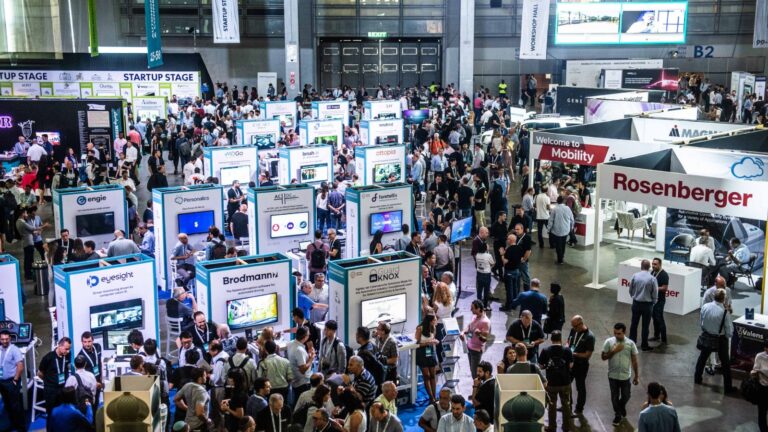If you’ve ever run the vent on your kitchen range or tried to catch 40 winks in an airplane, you probably wished someone would invent a way to block the noise without the need for headphones.
Israel’s Silentium has done that. The company’s active noise control (ANC) chip produces “anti-noise” — opposing sound waves of the same amplitude as the disturbing noise, which shuts out the din (sans the discomfort of earplugs).
Spread the Word
• Email this article to friends or colleagues
• Share this article on Facebook or Twitter
• Write about and link to this article on your blog
• Local relevancy? Send this article to your local press
The newest use of this technology is Silentium’s trademarked Quiet Bubble, which captures and cancels out ambient environmental noise, creating a “zone of quiet” around airplane and car passengers.
The applications are nearly infinite, as Silentium executives demonstrated recently at the Consumer Electronics Show (CES) in Las Vegas, where NBC News chose the Israeli tech among the Best of CES 2013.
The chip can be installed by manufacturers of heating-ventilation-air-conditioning equipment, home appliances, medical machinery, data centers, car and airplane seats – “wherever you have noise issues,” says Yoel Naor, chief product officer at the Rehovot-based company.
Quiet in the kitchen
Naor tells ISRAEL21c that the scientific principle behind Silentium’s ANC technology existed for decades. However, nobody had successfully harnessed it except in headphones and other limited applications.
Silentium’s sophisticated range of solutions comes in two “flavors.”
One option reduces noise at the source, before it spreads to the environment. The new “World’s Quietest Range Hood” just introduced by Faber — the Italian company that invented range hoods and now has a significant share of the market worldwide – is silenced by a Silentium chip.
Ventilation hoods and other gadgets that depend on air flow are difficult to keep quiet because blocking the noise physically also blocks the air and renders the appliance useless. Faber turned to Silentium to find a unique solution for the many brands that use the Faber hood.
The same solution is being used by a maker of diagnostic equipment that depends on noisy air flow, to reduce the negative health effects of noise pollution for hospital patients and staff. “In the healthcare market, it is well known that noise adds stress,” says Naor.
Quiet on the road and in the air
The Quiet Bubble option is for environments such as cars and airplanes, where the noise comes from several sources. Passengers are bombarded with the sounds of the engine and mechanical parts, as well as the wind outside. Ordinarily, noise reduction is achieved by adding heavy acoustic absorbers.
Silentium put its chip technology into a prototype car to show how its Quiet Bubble embedded in the headrests can do the job better, without adding gas-guzzling weight to the vehicle.
Interest is high: In December, the Israel-U.S. Binational Industrial Research and Development (BIRD) Foundation approved a major grant for Silentium to work with Wisconsin-based giant Johnson Controls, a global automotive industry leader, to develop ambient ANC for vehicles.
“Our broadband solution has the ability to sense noise from all directions and cancel it,” says Naor, who predicts this automotive advance will be commercialized and on the market within the next few years.
Future iterations of the system will synch with the car’s audio and with passengers’ cell phones, too, so that every passenger could listen to music or conversations without disturbing others.
Ditto airplanes. “We are collaborating with a seat manufacturer for business and first class,” says Naor. “The infotainment system connects with our patented headrest so you can watch the movie and hear messages without bulky, uncomfortable headphones.”
Quiet in the office
Years of preliminary research behind Silentium began in 1999, led by veteran business executive Yossi Barath. New products are constantly in the pipeline; Quiet Bubble was introduced only in the past year.
One of Silentium’s first products, still being sold in Europe, is the ActiveSilencer enclosure for the Intel Modular Server. Office workers can sit right next to the server without disturbance, saving companies on valuable square footage. A customizable solution, the trademarked S-Cube, comes in a kit for specific server-noise needs.
The company also offers a DIY development kit for engineers looking to develop quiet products, and trains makers of passive acoustic materials to enhance their products with the Silentium chip.
Silentium has so far been funded through private investors and VCs, and now seeks a $6 million investment for a major market breakout, says Naor.
The company expects to increase its staff of 20 by another 10 this year, and is actively wooing additional commercial partners. “We cannot have all our eggs in one basket,” as Naor puts it.
Because the technology has so many potential applications, a range of partners is the smart way to go toward making silence golden.
*Photo via Shutterstock



















